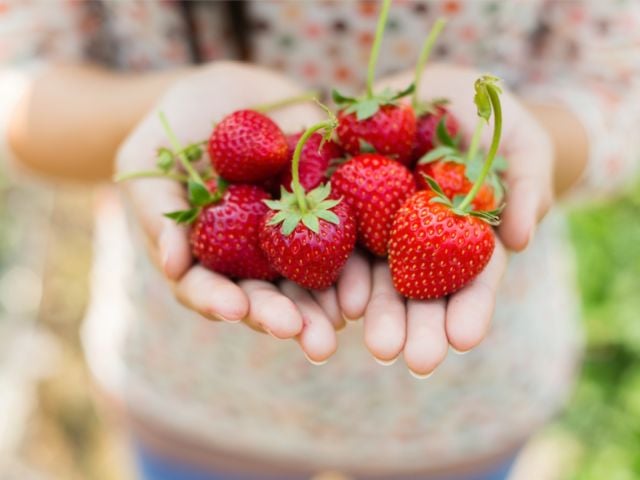
Breast cancer is the second most common type of cancer. And with cases on the rise, October’s Breast Cancer Awareness Month is a good time to look closely at the part everyday chemical exposures play.
Between 2012 and 2021, breast cancer incidence went up by roughly 1 percent per year. Rates are higher among women ages 20 to 49 than among women age 50 or older. Less than 1 percent of all breast cancer cases occur in men.
In 2024 alone, an estimated 310,720 new cases of breast cancer will be diagnosed. But deaths from breast cancer are declining. In the U.S., deaths dropped 44 percent between 1989 to 2022. And nine in 10 breast cancer patients will live five years or more after being diagnosed.
One reason for the improved outlook may be better and earlier screening and early detection leads to a higher survival rate.
Breast cancer is a result of the formation of cancer cells that mutate in breast tissue. These cells can then form tumors that lead to lumps or thickening in the breasts.
And we still don’t fully understand all the causes.
Chemicals and breast cancer
The risk factors for breast cancer include a blend of genetic, hormonal, and environmental factors. Scientific evidence increasingly points to a link between chemical exposures and breast cancer.
Chemicals can lead to cancer in various ways, but the formation of tumors is one of the main effects studies measure. Aside from known carcinogens, one category of chemicals of particular concern is endocrine-disrupting chemicals, also known as EDCs. These chemicals cause hormonal changes associated with increased breast cancer risk, according to a study published earlier this year.
EDCs interfere with the functioning and signaling of the hormone system. The study reported that over 900 chemicals were associated with hormone disruption or the formation of mammary gland tumors. The list of chemicals included phthalates, parabens, pesticides like glyphosate, the “forever chemicals” known as PFAS, and bisphenol A, better known as BPA. These chemicals are found in our drinking water, food and everyday consumer products.
When chemicals are combined, their interactions can heighten toxicity. When they contaminate multiple products used daily, exposure goes up.
Lowering your exposure to hazardous chemicals
You can’t control all the risk factors for breast cancer, but you can reduce your exposure:
- Get more information. Look for your personal care products in EWG’s searchable Skin Deep® database to see which, if any, contain EDCs or carcinogens. Look for products rated low for developmental and reproductive toxicity and cancer under common concerns on ingredient pages. Products that bear the EWG Verified® seal are a good choice as they have met EWG’s strictest standards for health and safety.
- Read ingredient labels. Armed with this extra information, check product labels for chemicals known to be hazardous, so you can avoid buying them.
- Choose organic produce. If you want to limit your exposure to glyphosate, shop organic, when you can. EWG’s Shopper’s Guide to Pesticides in Produce includes a list of fruits and vegetables with the highest and lowest amounts of pesticide residue.
- Filter your tap water. Hazardous chemicals often contaminate drinking water. Check out EWG’s Tap Water Database, to find out what chemicals pollute your water. EWG’s water filter guide can help you determine which water filter is best for you.
- Avoid PFAS in cookware and food packaging. To avoid PFAS in cookware, browse EWG’s Guide To Avoiding PFAS Chemicals to reduce your exposure to forever chemicals.
There are other actions you can take for breast health:
- Get screened early. Preventive procedures such as regular breast cancer screenings are important to detect breast cancer early, which can also make it easier to treat. As of 2024, experts suggest undergoing screening for breast cancer starting at age 40.
- Know your family history. Find out about your family’s history of breast cancer, if possible. Some genes with mutations raise the risk of developing this type of cancer.
- Work with your health care provider. An annual visit to your medical provider for a breast exam and regular breast self-exam can help reveal changes in breast tissue.
- Adopt a healthy lifestyle. Take additional steps to stay healthy. Additional factors that can help prevent breast cancer include maintaining a healthy weight, exercising, and minimizing alcohol or choosing to abstain from consuming it.
EWG’s scientists rigorously evaluate the toxicity of chemical ingredients in personal care products, household cleaners, food, and water. These databases help consumers make informed choices and take action to reduce exposure to hazardous chemicals.
For more information, be sure to read EWG’s guide on the Top 5 chemicals to avoid for cancer prevention and explore our other resources and guides developed to help you live a healthier life.



